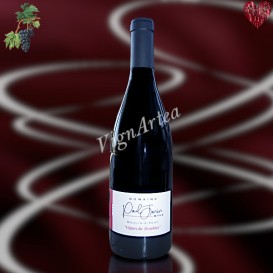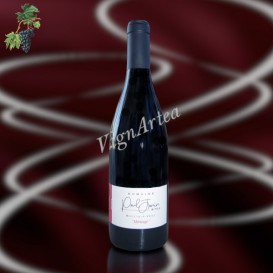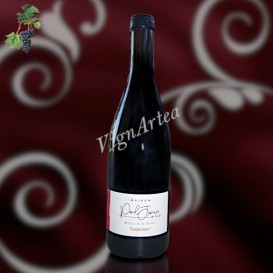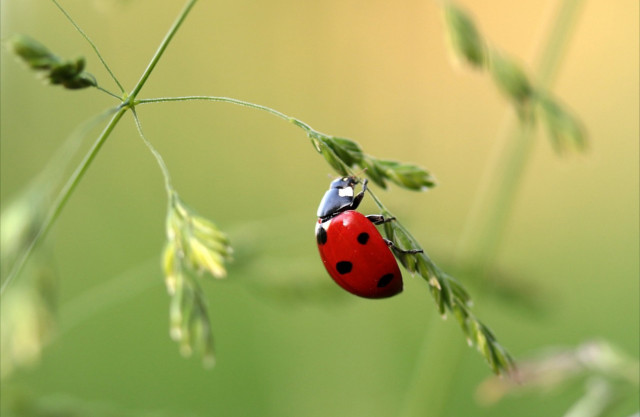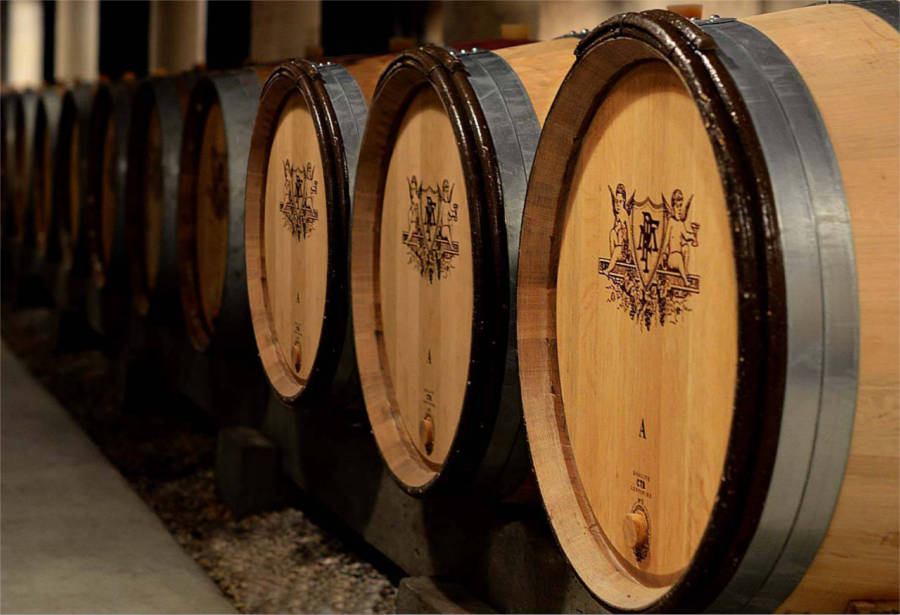Paul JANIN & FILS

BEAUJOLAIS 8,45 ha Sustainable Agriculture WINEMAKER: Éric JANIN
ESTATE HISTORY
The Paul JANIN & Fils estate, located in Romanèche-Thorins, in the heart of the Moulin-À-Vent designation, is already a century old.
The family story began in 1918 under the direction of Jean-Claude Janin, who was then a cooper and a winegrower at the same time. In 1937, his son bought a few plots in the area known as Le Tremblay .
From generation to generation, the know-how was passed on and the estate progressively grew through the acquisition of several other parcels until it reached a surface of 8.45 ha. Today, some of the vines are a hundred years old, they are the jewels of the domain. And this, thanks to the tenacity of each generation that has succeeded one another and has thus been able to perpetuate the wine business.
WINEGROWING & WINEMAKING
The estate has always practiced sustainable agriculture for the management of its vineyards. In the early 1900's, after several agronomy trainings, Eric began to take an interest in the study of soils to begin a conversion to Organic Agriculture in order to obtain certification in 2024.
For the harvest, he remains faithful to the know-how of his ancestors and proceeds to pick the grapes as late as possible, when they are at their optimum maturity. As he says himself, "it's all about the last few days".
.
The grapes are sorted on a sorting table. When the maturity degree of the stalks allows it, the grapes are vinified in whole bunches, otherwise the harvest is generally destemmed at 30% or 40%, even more (80% for example on the 2021 vintage) in order to avoid communicating to the must some vegetal aromas.
The alcoholic fermentation is carried out with semi-carbonic maceration: the partially destemmed grapes are put whole and not crushed in vats. The berries at the vat's bottom burst and start a yeast-like fermentation, while the berries at the vat's top are in an oxygen-deprived environment and develop an anaerobic metabolism to produce the energy they need by transforming their own sugar reserve into alcohol.
This type of maceration is specific to the Beaujolais region and is particularly adapted to Gamay.
The semi-carbonic maceration lasts about 12 to 15 days with daily pumping over, followed by a light punching down at the end of the maceration phase. The musts are then pressed, free-run juice and press juice are blended in tanks where they finish their alcoholic fermentation.
In order to avoid any risk of contamination by undesirable agents at the origin of potential aromatic deviations, neutral oenological yeasts are added to the must: they have the advantage of ensuring a good end of fermentation, avoiding the proliferation of unwanted organisms, while respecting the aromas precursors present on the grapes since they are said to be neutral (without aromatic orientation). The malolactics are all entirely done.
The maturation phase is done plot by plot, on fine lees and in tanks with micro-oxygenation. The duration varies from 10 to 18 months depending on the vintage.
The blending of the terroirs is done once the maturation is finished and after the tasting of each plot must. The wines are not fined but slightly filtered before bottling.
TERROIR
The subsoil of the Beaujolais region rests on the Hercynian basement which was formed in four stages:
- during the primary era, 300 million years long, erosion had flattened the high mountains that the Hercynian folding had raised on most of the current territory of France, leaving only a plain composed of granite and gneiss.
The granitic, volcanic and schistose soils that make up the current Beaujolais village designation, as well as those of the ten Crus of the region, come from the superficial alteration of these primary soils. - The secondary era, which lasted 150 million years, was a long period of sedimentation, thanks to the flooding of the primary basement by a shallow sea, at the bottom of which were deposited sandy and siliceous sediments of the Triasic, then clay-limestone of the Jurassic.
- The tertiary era was marked by violent movements of the subsoil which caused the high mountains of the Pyrenees and the Alps to rise. These movements also caused collapses, giving rise to the plains of the Rhine, the Loire, the Allier and the Saône. They also caused the concomitant uplift of the foothills of the Massif Central on the last slopes where the Beaujolais vineyards now lie. A network of faults slowly formed during this upheaval, cutting through the Jurassic clay-limestone soils in the south and the crystalline rocks in the north.
- During the Quaternary period, glaciers formed numerous clayey-siliceous moraine deposits in the south of Beaujolais. The lowering of the sea level favored the digging of the valleys by the rivers which created the alluvial terraces.
The soils of the Moulin-à-Vent designation date from the primary era. They are granitic arenas which, under the effect of erosion, compose a thin and very filtering sandy soil. In the lower part of the vineyard, we find silty sands on the flats and the low slopes of the alluvial fans. They alternate with sandy-silty to sandy-clayey colluvial soils and coarse sands coming from the dominant granites here.
Moving up the hillside, the soils are also composed of silty sands and coarse sands with a high mineral content, especially manganese. It is thought that this specific composition probably plays an interesting role in the sensory characteristics of the wines produced.
-
VIGNES DU TREMBLAY 2021 (Domaine Paul JANIN & FILS)
20,99 € In stock!BEAUJOLAIS - AOP MOULIN-A-VENT - RED WINE
Grape variety: White juice Gamay Noir (100%)
Ageing on fine lees in tanks for 16 months
- Nose: generous and spicy. Notes of ripe black fruits, chocolate and black pepper.
- Palate: nice body, finely structured by silky tannins. Long finish with a beautiful aromatic persistence.
- Tasting date: April 2023.
- OUR OPINION: very beautiful Gamay, racy, with a rich and dense body. It offers a very beautiful aromatic which should gain in power and complexity with time. A real favorite! ❤️❤️
- Nose: generous and spicy. Notes of ripe black fruits, chocolate and black pepper.
-
HERITAGE 2021 (Domaine Paul JANIN & FILS)
28,50 € In stock!BEAUJOLAIS - AOP MOULIN-A-VENT - RED WINE
Grape variety: White juice Gamay Noir (100%)
Ageing on fine lees in tanks for 16 months
- Nose: intense. Notes of ripe black fruits, chocolate and menthol.
- Palate: dense and finely structured. Long finish with a nice aromatic persistence.
- Tasting date: April 2023.
- OUR OPINION: very beautiful Gamay, rich and powerful, very concentrated. This wine is powerful, it can be kept for a long time in cellar. It gains in intensity the day after opening.
- Nose: intense. Notes of ripe black fruits, chocolate and menthol.
-
EMPREINTE 2021 (Domaine Paul JANIN & FILS)
21,00 € In stock!BEAUJOLAIS - AOP MOULIN-A-VENT - RED WINE
Grape variety: White juice Gamay Noir (100%)
Ageing on fine lees in tanks for 10 months
- Nose: tasty and very rich. Notes of black fruits dominated by blackcurrant, sweet spices.
- Palate: fresh. Fine tannins. Nice fruity finish.
- Tasting date: April 2023.
- OUR OPINION: nice Gamay, made from young vines which give it lightness and an elegant fruitiness. The next day, the palate is richer and light chocolate aromas appear.
- Nose: tasty and very rich. Notes of black fruits dominated by blackcurrant, sweet spices.

